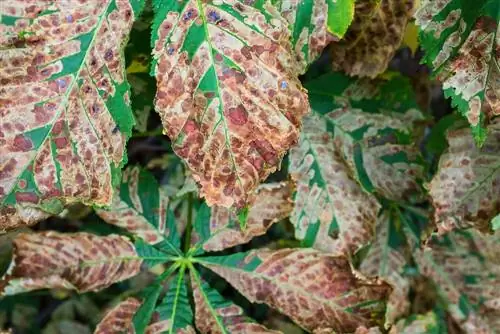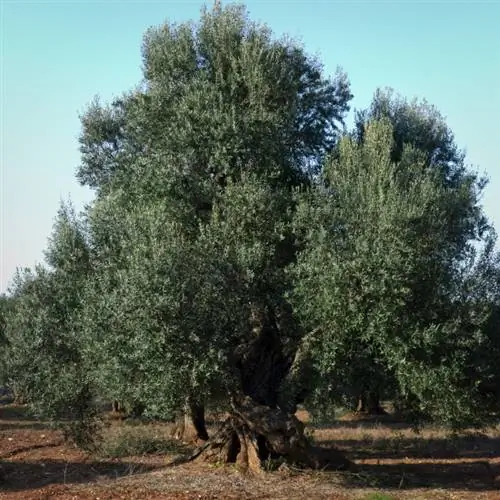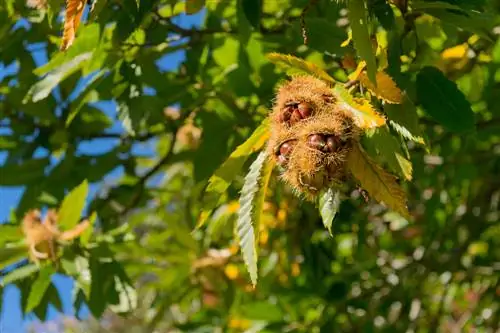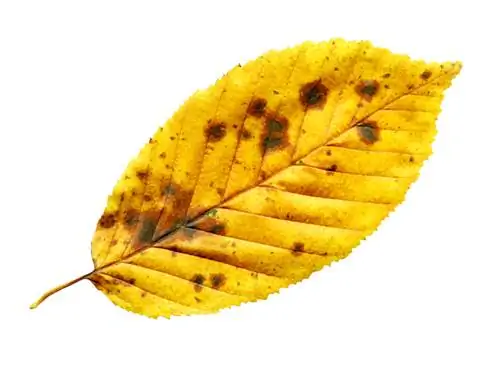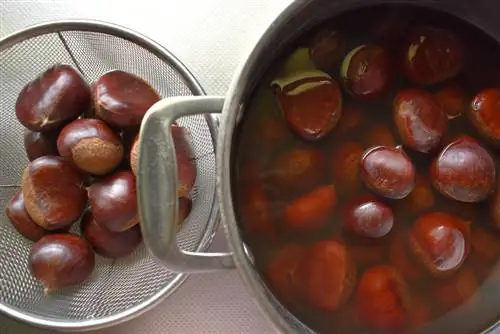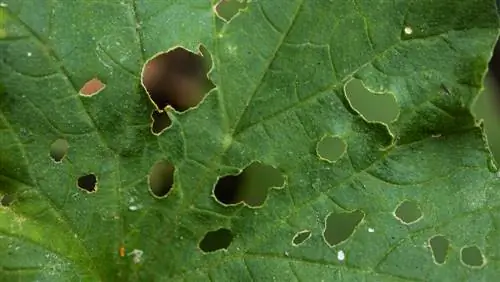- Author admin [email protected].
- Public 2023-12-16 16:46.
- Last modified 2025-01-23 11:21.
If your chestnut, no matter what kind, gets brown leaves or brown spots on the leaves in the summer, then it urgently needs your help. Before doing so, however, you should research the causes of the brown leaves.
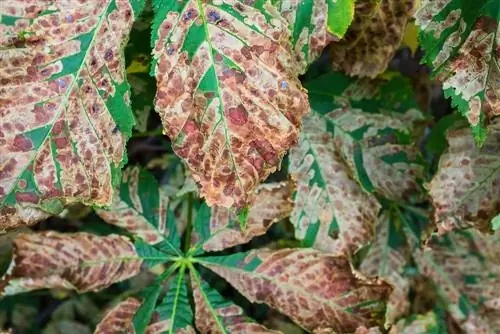
What causes brown leaves on chestnuts in summer?
Chestnuts get brown leaves in summer due to sunburn, chestnut leaf miners or leaf browning. To combat the cause, you should water adequately, remove infected foliage quickly and treat fungal infections with fungicides.
Although you can't always remedy the situation immediately, you can at least ensure that this problem doesn't happen again next year and thus protect your chestnut from possible damage in the long term.
Where do the brown leaves come from?
Sunburn, for example, could be the cause of the brown leaves. Although the chestnut likes a sunny location, the leaves can burn, especially on a young tree. The danger increases the longer any drought lasts and the less water your chestnut receives. Also think about your chestnut in the pot.
While sunburn only causes short-term damage, brown leaves caused by the chestnut leaf miner should not be underestimated. The larvae of this pest like to overwinter in fallen leaves and in the ground. The next year they attack the chestnut again and can significantly weaken the tree in the long term. This is especially true for younger chestnuts.
Leaf browning or leaf rolling disease first leads to spots, then later to wilting and curling leaves, as the name suggests. It is caused by a fungus called Guignardia aesculi.
The most important causes of brown leaves:
- Sunburn
- Chestnut leaf miner
- Leaf Tan
Tip
Always remove and dispose of prematurely fallen leaves as quickly as possible to prevent a leaf disease from spreading.

